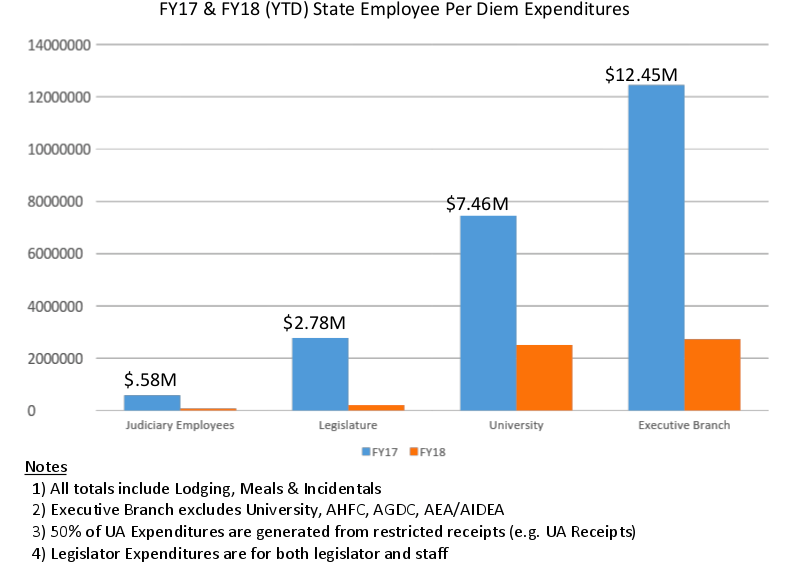Every fiscal hawk is looking for cuts to State government. Sometimes those cuts are right in front of a legislator — on a plate in a restaurant, perhaps. In Juneau, that’s not cheap.
The State Officers Compensation Commission reduced legislators’ per diem during a short work session in October. Lawmakers typically get between $20,000 and $35,000 a year to cover meals and lodging while in session. The commission chopped that about in half, although the calculation is unclear and the recommendations must still be approved by the Legislature.
The commission, however, did not touch the per diem of members of the Executive Branch during its review. That’s not in its purview, except for that of the governor and his cabinet.
Gov. Bill Walker, who is eschewing some of his own salary by donating it to charitable causes, has driven up legislative per diem costs by failing to veto over-spending and then calling lawmakers into numerous special sessions, during which they collect the extra per diem for being herded into Juneau.
An analysis of State per diem shows the Executive Branch, which includes the Governor’s Office and thousands of state workers, is 10 times that of the entire Legislature, which has traveled back and forth to Juneau to meet the requirements of the Special Sessions.
In all, Executive Branch state employee per diem exceeds that of all other branches of government — University, Legislature, and Judiciary — combined.

HOW DOES PER DIEM WORK FOR LEGISLATORS?
An explanation of how legislative per diem is awarded is in the Alaska Legislature 2016 Salary and Business Expense Report, detailing salaries, per diem and travel expenses during the calendar year 2016:
Legislators are reimbursed per diem for lodging and meal expenses during a session. During the regular session held in the capital city, the 57 Legislators whose place of permanent residence is not Juneau were reimbursed $223 per day from January 19, 2016 through February 29, 2016, and $213 per day from March 1, 2016 through April 30, 2016 and $247 per day from May 1, 2016 through May 18, 2016. Juneau Legislators received $167.25, $159.75 and $185.25 per day, respectively. In 2016, the 29th Legislature convened for 121 days in regular session.
a. Regular session per diem amounts received by Juneau Legislators should not be compared to session per diem amounts received by Legislators whose place of permanent residence is not Juneau as the daily rates are lower for Juneau Legislators.
The 29th Legislature convened in two Special Sessions during 2016. The first Special Session ran from May 23, 2016 through June 19, 2016, and lasted for 28 days. The Juneau per diem rate was $247 per day. Juneau Legislators received $185.25.
The second Special Session of 2016 (the 5th Special Session of the 29th Legislature) ran from July 11, 2016 through July 18, 2016, and lasted for eight days. The Juneau per diem rate was $247 per day, and Juneau Legislators received $185.25.
Legislators in travel status to a place other than their place of permanent residence are reimbursed a short term per diem rate or actual lodging expenses plus a meal allowance to cover costs associated with their business travel.
The 2016 legislative payroll and expense breakdown can be found here:

What you fail to recognize is the RATE of per diem for the two branches. Executive Branch employees are limited to the state per diem rate. The legislature has voted to put themselves on the federal rate, which is much higher, because, well, they can. If you have two state employees, one legislator and one an executive branch member, staying in the same hotel on the same night, attending the same conference or event, the legislator will collect more per diem for their meals and expenses, simply because the legislature has voted to pay themselves more. Patently unjust and a slap in the face for executive branch employees. The figures presented above are irrelevant unless you take into account the number of employees in each branch. There are a lot more executive branch employees than legislative branch employees, so it stands to reason that their overall expenses would be higher. Show a graph outlining expenses per employee or per 100 employees, and the results will be quite different. The legislature is saying cut, cut, cut to state government, why don’t they start by treating themselves at least as equals when it comes to travel expenses?